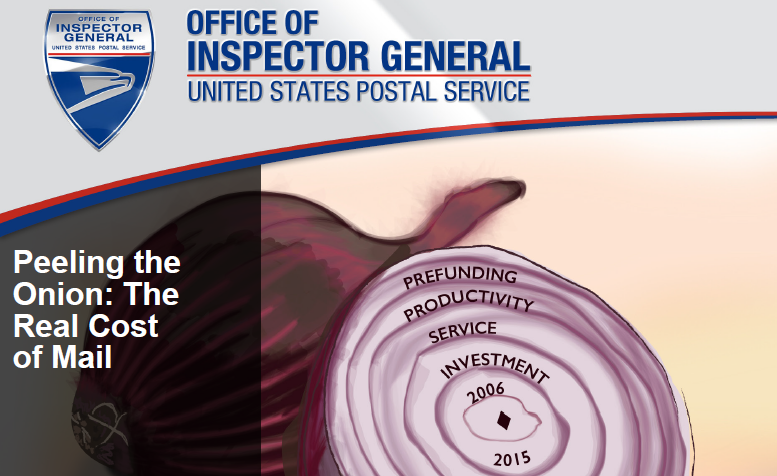OIG: USPS Cost-Cutting Strategies ‘Not Sustainable’
April 28, 2016
The Postal Service has cut labor costs by more than $10 billion since the Postal Accountability and Enhancement Act (PAEA) was passed in 2006, but its cost-cutting strategies are “not sustainable,” according to a recent report by the Office of Inspector General (OIG).
Labor costs declined by nearly 21 percent (when adjusted for inflation and excluding the pre-funding of retirees healthcare) and account for approximately 75 percent of the total reduction in expenses.
But “the tradeoffs among cost control, service quality, and modernization remain a concern for the Postal Service,” the report warned. The report, titled “Peeling the Onion: The Real Cost of Mail,” said cost-cutting measures included:
- Substituting career workers with non-career employees at an average of 3 percent per year;

- Decreasing work hours by an average of 2.8 percent annually;
- Reducing wages by an average 3.1 percent per year;
- Downsizing and restructuring the network;
- Reducing the number of delivery routes;
- Decreasing the use of air transportation;
- Reducing capital expenditures, and
- Lowering service quality.
The extensive use of non-career employees, who earn lower pay and receive fewer benefits than their career counterparts, is “problematic,” the report found. While turnover among career postal workers is less than 1.3 percent, the quit rate for non-career workers was 29 percent in fiscal year 2014, “perhaps due to low wages and low benefits,” the OIG said.
The high turnover among non-career employees “raises the question of whether the Postal Service can continue to increase its productivity if it has to deal with training and recruiting new employees constantly,” the report said. “Furthermore, the impact on service quality of increased use of non-career employees is unclear.”
“What is clear is that the impact of cost reductions on customer service has been considerable,” the OIG said. External First Class Measurement (EXFC) scores for a single piece of First-Class mail declined by nearly 6.71 percent for two-day service and by almost 38.60 percent for three-day service compared to the previous year – despite the implementation of more relaxed service standards in January 2015.
It’s the Pre-Funding
The report blames the PAEA-mandated pre-funding of retiree health benefits 75 years into the future as the “primary source” of the Postal Service’s financial problems, noting that pre-funding costs reached $49 billion between fiscal year 2006 and 2015. Eliminating the payments would have reduced total losses by 90 percent.
Nonetheless, “Overall, the Postal Service is doing better financially than sometimes reported in the press,” the OIG observed.
“If the Postal Service is to meet the commercial and universal service needs of America’s growing population, it must continually seek to improve customer service and be allowed to make appropriate capital investments to fully integrate its network with the digital world. Postal stakeholders and management need to develop ways and means for generating adequate revenue so that the Postal Service can build for the future,” the report concludes.
APWU President Mark Dimondstein urged management to rethink its strategy. “This report underscores concerns we’ve been raising for quite some time,” he said. “Cuts to service and jobs are hurting the people of the country and jeopardizing the future of our great national treasure.
“If management takes this report with the seriousness it deserves they will stop delaying America’s mail and make sure the Postal Service is properly staffed so that we can carry out our mission. In the end, the Postal Service is a service, not a business.”



